Key takeaways.
-
What factors are involved in dosage?
The primary factors to consider are your goals, the severity of the symptoms, your weight and metabolism, and the consumption method.
-
What's an average THC dose?
An average THC dose is around 5-10mg across all consumption methods. This may be slightly higher for sleep.
-
What's an average CBD dose?
The starting average CBD dose is about 50mg. Your dose will be higher if your goal is to improve sleep, manage pain, or reduce inflammation. You can use our CBD Dosage Calculator to find your ideal introductory CBD dosage for a number of health goals and conditions, from anxiety, depression, and ADHD to gut health, immunity, and sleep. The data is based on clinical trials, pre-clinical studies, forums, and user experience reports.
Now that the world is beginning to treat cannabis as a medicine, it’s necessary to think about dosage.
Despite the fact that cannabis has been legalized for therapeutic use in Canada, the USA, Australia, and many other parts of the world, there is still no international standard for cannabis dosage.
This could be the case for a number of reasons.
One reason could be that science has yet to identify a fatally toxic dose of cannabis. There’s no single dose a person could take that would dramatically affect their health or well-being.
Another plausible explanation for the lack of a standard dose guide is that there were still a lot of gaps in our understanding of cannabis when it was legalized, let alone optimal dosage. In a professional sense, those gaps still exist, with many cannabis patients finding the right dose through trial and error.
With all of that in mind, remember that this is a guide for cannabis dosing. Many factors will contribute to what you finally choose as your optimum dose, and as your condition progresses or improves, your optimal dose might change.
This is mainly a guide to dosing with both THC and CBD edibles, oils, and topical treatments.
We’ll briefly cover smoking and vaporizing, as these are still legitimate forms of medicinal cannabis consumption. However, dosage is less of an issue (and more complicated to measure) with these forms of cannabis consumption.
Factors that affect how much cannabis you need to take.
There are a few different factors that will affect how large of a cannabis dose you need to take. Remember, these are factors to consider, rather than hard and fast rules.
The biphasic nature of CBD and THC.
CBD and THC are both biphasic. That means they exert different effects and benefits depending on the dose you take.
For THC, lower doses are uplifting, anxiety-relieving, and painkilling, but higher doses can be dysphoric.
For CBD, moderate doses (50 - 150mg) relieve stress, reduce anxiety, sharpen focus, and boost mood, while higher doses (150mg+) help improve sleep as well as manage pain and inflammation.
Weight, metabolism, and body composition.
As you might imagine is the case with a lot of medications, body weight plays an important factor. Typically, for smaller people, smaller doses are required, and the opposite applies to bigger people.
Metabolism is another factor that contributes to how you experience cannabis. Naturally, the longer a drug takes to pass through metabolic processes, the longer it takes to have an effect. It might also have a less pronounced effect as the therapeutic dose isn't delivered all at once. Therefore, you should consider your metabolism should when starting your dosing regimen.
Other factors that can play into your experience are your metabolism, respiratory system health, liver health, or certain pre-existing medical conditions. These systems are responsible for processing cannabis in your body.
Product potency.
The strength of the product you’re going to consume will play a huge role in how your body will react. Products that have a strong THC potency will likely make you feel more high and sedated.
As a general rule, the higher the THC content, the stronger your physical high. On the other hand, CBD is non-sedating, although it has been known to interact with some medicines that may intensify sensations of drowsiness.
Ratio products, or products that contain both CBD and THC, deliver different experiences altogether.
That's because THC confers its psychoactive effects by interacting with your Endocannabinoid System's (ECS) CB1 receptors. CBD has little binding affinity for either CB1 or CB2 receptors, but it is capable of antagonizing them in the presence of THC. In fact, CBD behaves as a non-competitive negative allosteric modulator of CB1 receptor, and it reduces the efficacy and potency of THC.
That means that CBD may act as a blocker at CB1 receptors, hindering THC's ability to get you high.
Method of consumption.
Smoking or vaping cannabis delivers different effects than ingesting it orally through an edible or capsule.
There are 2 major components to the method of consumption:
- bioavailability
- how your body metabolizes it
Different methods of consumption have different bioavailabilities. Just because a product says it contains 10mg cannabinoids, whether it be Δ9-tetrahydrocannabinol (THC) or cannabidiol (CBD), doesn’t mean your body is receiving or utilizing all 10mg.

Both inhaled and sublingual forms of consumption rely on similar mucous membranes for absorption into the bloodstream. It follows that both inhalation and sublingual (under the tongue) intake have comparable bioavailabilities of around 30%. So, if you smoke or drop 10mg under your tongue, your body is able to utilize 3mg.
The upside of sublingual consumption is that it helps you avoid smoking, which is objectively healthier.
Edibles' bioavailability, on the other hand, ranges from 4–20% on a good day. That means a 10mg THC edible delivers at most 2mg THC. However, 10mg in an edible might be experienced more intensely than 10mg in a tincture. That's because of the way edibles are metabolized.
When you ingest cannabis, it’s processed through your gut and liver. This makes the high last longer, as the actives are metabolized progressively, so the high comes on progressively. The edibles high is stronger, as well. That's because your liver converts THC into a psychoactive metabolite that's more potent than THC.
Food, alcohol, drugs, and other health products.
Food, alcohol, other drugs, or health products can affect your high.
For example, if you take an edible on an empty stomach, your body will have an easier time digesting and processing the edible on its own, and more of it will be more rapidly bioavailable. Taking that same edible after a meal may slow down its digestion, meaning the effects may be delayed and the high won't be as pronounced.
Mixing alcohol and THC also compounds both of their effects, and can lead to dizziness, confusion, and nausea.
Because CBD interacts with dozens of pathways, it has a chance of interacting with medications you may be on. Check out our guide to possible side effects and interactions, and speak to a healthcare professional to figure out a schedule that would allow you to incorporate both.
How to dose when smoking and vaporizing.
A strict dosing regimen is nearly impossible to achieve with smoking or vaporizing.
There’s no real way to determine the exact cannabinoid concentration in any given inhale, although some vaporizers have mechanisms that control the length and dose of the draw. For the most part, however, there’s no real knowing how much of those cannabinoids were lost during combustion.
Vape juices typically advertise the cannabinoid concentration on the bottle. But again, the amount of cannabinoids that actually arrive in your body is purely an estimation.
That doesn’t mean that smoking and vaporizing can’t be used therapeutically. However, they shouldn’t be used in circumstances where the individual requires a strict dosing regimen. It can be used, however, in acute situations (such as anxiety attacks) where immediate relief is required.
The dose can simply be controlled by abstaining from further use once the effects are where you want them to be. In short — stop smoking when you’ve had enough.
Dosage guide for THC edibles.
Edibles are the least bioavailable way to consume cannabinoids. Bioavailability refers to the amount of cannabinoids that actually arrive at target tissues. Because edible cannabis must pass through digestive processes such as stomach acid and liver digestion, some of it is simply lost.
At the same time, edibles produce effects much more long-lasting than other forms of cannabis consumption. It’s also very easy to accidentally take too much.
When you are using this guide, remember factors such as weight and metabolism. This dosage guide for edibles is for the average person. If you consider yourself heavier or having a slower metabolism than the average person, you may need a higher dose than what’s outlined here.
Dosage guide for THC tinctures (oils).
Tinctures are received by the body faster and easier than edibles. The effects don’t last as long as edibles but are specifically useful when faster therapeutic action is required. For maximum bioavailability, tinctures should be dropped under the tongue and left to dissolve through the mucous membranes. If swallowed, the tincture will take longer to take effect.
Depending on the reason you’re using THC, you may wish to spread your dose out over the entire day. This ensures lasting effects. If you’re using it for insomnia, for example, it would be best to take the entire dose before bed.
Tinctures offer a very flexible dosing regimen. For this reason, we recommend starting at a low dose and increasing your dose each day until you find the perfect one. Here are some starting points, depending on the severity of the problem.
We recommend the following regimen to find your perfect dose within this framework:
- Take 5mg in the morning and 5mg at night for the first three days.
- Increase by 2.5 mg in the evenings for days 4-7.
- Take 10mg in the morning and 10mg in the evening for 7 days.
- Increase each dose by 2.5 mg every three days until the perfect dose is found.
Topicals dosage guide.
When it comes to topical treatment with cannabis (THC or CBD), cannabinoid concentration matters a lot. Lower cannabinoid levels can typically improve skin health and address minor skin irritations, but for the treatment of muscular pain or inflammation, higher concentrations are required. Most commercially available cannabis topicals do not contain cannabinoid concentrations high enough to be considered suitable for muscle pain or inflammation. We’ve put together this guide so you know which topical is appropriate for which reasons.
CBD dosage guide.
We know that when it comes to CBD, things are a little different than THC. To start with, CBD doesn’t have intoxicating properties, so there’s some more leniency when it comes to dosing. For example, it's still appropriate to drive after consuming CBD.
Generally speaking, around 150 - 300mg of CBD daily is ideal for combating stress and its manifestations (depression, anxiety, burnout, fear). Higher doses are recommended for sleep, pain, and inflammation.
Lastly, there is a difference between CBD isolate and full-spectrum CBD. Because the former is a single-compound ingredient, it doesn't have the same exact properties as the full-spectrum version. Because full-spectrum CBD contains additional cannabinoids, terpenes, flavonoids, and other therapeutic compounds that work synergistically, you need less of it to produce the same effects. This is called the entourage effect.
What's more, studies show that CBD isolate only works when you use approximately 300mg. However, full-spectrum CBD has a linear dose-response relationship—the more you take, the greater the effects.
CBD isolate vs. full-spectrum CBD: clinical studies about dosing.
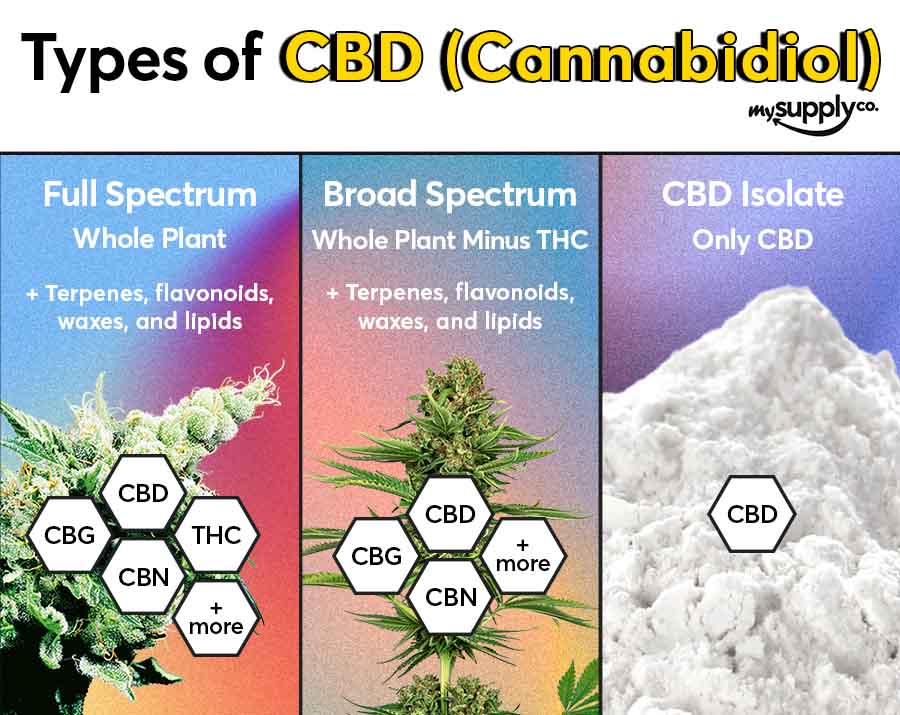
On average, clinical studies show that 150mg - 300mg of CBD are ideal for managing stress and its manifestations (anxiety, depression, burnout, and PTSD). However, clinical literally also demonstrates that there's a difference between the efficacy and effects of CBD isolate and full-spectrum CBD. This section examines the clinical literature for the most effective doses of each and their intended purpose.
As mentioned earlier, preclinical research by Gallily and colleagues observed a bell-shaped dose-response curve for the anti-inflammatory and anti-nociceptive (pain from inflammation and injury) effects of CBD isolate, while a linear dose-response was noted for a full-spectrum high-CBD product.
In a 2021 study on CBD for stress and burnout, 300mg of CBD was sufficient for reducing emotional exhaustion and burnout symptoms among frontline health care professionals.
In 2022, researchers published results from a clinical trial indicating that a 4-week treatment with a high-CBD (full-spectrum) sublingual product effectively reduces moderate-to-severe anxiety. Patients experienced significant anxiety reduction within a week, with all achieving and maintaining treatment response by week 3; this is notably faster than conventional pharmacotherapy which can take up to 12 weeks. These findings confirm and expand on prior research.
Notably, treatment response was achieved with a much lower dose (~30 mg/day) in this trial compared to a previous one using a single CBD isolate (~300 mg/day). This difference might be linked to the "entourage effect," where the combined action of various compounds, including cannabinoids, terpenoids, and flavonoids, can enhance the overall effects of cannabinoids when they work together synergistically.
A 2022 case study showed that pure CBD worked well for treating autism spectrum disorder (ASD) in childhood but stopped being effective during puberty, leading to increased hyperactivity and aggression. The solution was enriching pure CBD with a specific blend of calming terpenes, which significantly reduced aggressive behavior. Importantly, this improvement was achieved with significantly less CBD, less than half the amount used in pure CBD treatment (0.19 mg/bw vs. 0.48 mg/bw, respectively).
A meta-analysis published in the peer-reviewed journal Frontiers in Psychology revealed that patients with refractory epilepsy needed lower average doses when treated with full-spectrum, high-CBD products compared to single extracted CBD isolates. Patients using CBD-rich extracts had a lower average dose (6.0 mg/kg/day) compared to those using purified CBD (25.3 mg/kg/day). For somebody weighing 70kg, that's 420mg of full-spectrum CBD vs. 1,771mg of CBD isolate.
Furthermore, single-extracted CBD products were linked to more frequent reports of mild and severe side effects than full-spectrum, high-CBD products.
How much CBD should I take?
The short of it is, research still isn't quite sure what the perfect dose is, or if the dose depends on factors like weight.
Based on the available data, it appears that benefits are greatest with full-spectrum products within the realm of 150 - 300mg of full-spectrum CBD, although in some cases it is as low as 30mg.
As a rule of thumb, we recommend starting with 50mg per dose and gradually increasing your dose on a day-by-day basis until you achieve the desired benefits.
How to calculate CBD oil dosages.
For some people, it’s all a little too complicated to figure out how to get 10mg of CBD out of their 30 mL, 1000mg bottle of CBD oil. We’ve included this visual breakdown so that you don’t have to get all mathematical on your own. It shows you the mg of CBD in each drop, so that you know exactly how many drops to take to make up your dose.
CBD dosage reference chart.
To use this reference chart:
- Check how many milligrams are in your bottle of CBD
- Check the volume of your CBD tincture bottle
- Refer to the reference guide on how many mg of CBD is in each drop, and take as many drops as required to achieve your dose
Example 1:
You want to take 10mg of CBD. You have a 350 mg CBD tincture in a 15 mL bottle. According to the chart, each drop will contain 1.17 mg. To achieve a 10 mg dose, you should take 9 drops.
Example 2:
You want to take 25 mg of CBD. You have a 750 mg CBD tincture in a 30 mL bottle. According to the chart, each drop contains 1.25 mg. To achieve a 25 mg dose, you need to take 20 drops.
Pay attention to your body's response.
Let all of this serve as a useful guide on doses for different cannabis forms. At the same time, watch your body and how it responds. It may take some time to find your perfect dose or the perfect combination of doses, after all, CBD does work better with THC. You might also find that over time, your needs change, and so does your dose of cannabis. Let your body guide the way, and don’t forget to enjoy your journey with cannabis.
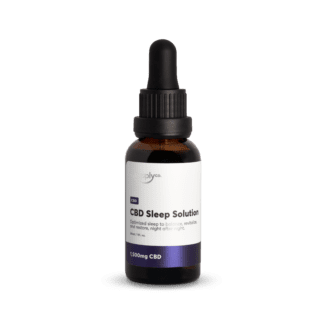
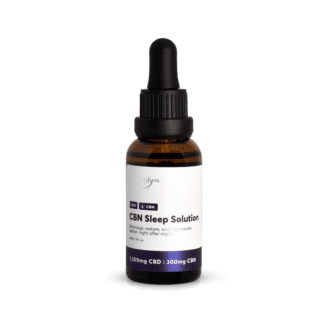

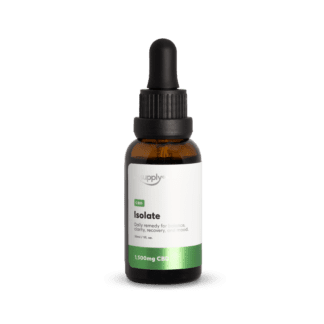
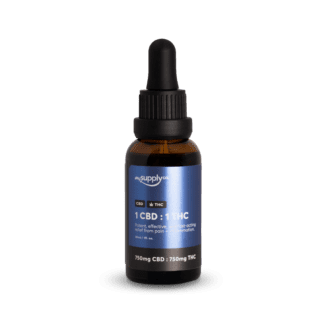

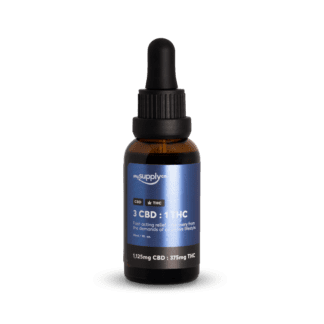

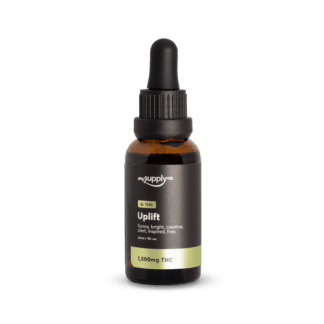
That was a very informative article. I don't have a lot of experience with tinctures.
We’ve come a long way
Good information
Wow, what an informative article! It's great to see that people are taking the time to educate themselves about cannabis dosing. I'm personally so grateful for this comprehensive guide, as it takes into account all the different factors that can affect the dosage you need to take. The biphasic nature of THC and CBD is really fascinating and I appreciate the explanation on how their effects vary depending on the dose. It's also important to note that weight, metabolism, and body composition play a role in determining your optimum dose. And, I definitely agree with the point that the method of consumption can also have a big impact on the effects you feel. I'm definitely going to share this article with my friends and keep it as a reference!
Very good information
Super informative and useful information!
awesome updated info team! I really appreciate your content on CBD dosing levels- just starting my own journey to lessened chronic nerve pain, here I come!
Rasberry Gummies sound good.
This is so interesting!
Very informative thanks so much for sharing. Tinctures can be tricky so this is a perfect guide.
Didn't realize what a high or low dosage was, I know now, interesting article.
Like your charts ~ informative
Very informative thanks so much for sharing , I was unaware of the High and Low, but this was clear and very helpful!
Good to know
Always appreciate your info!
I try to keep doses low.
Thank you once again for teaching me something new. I live reading these articles and find them super helpful in making dosing and product decisions.